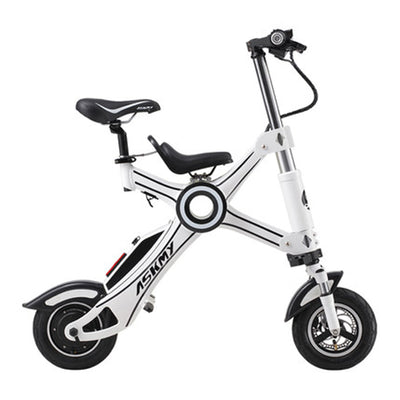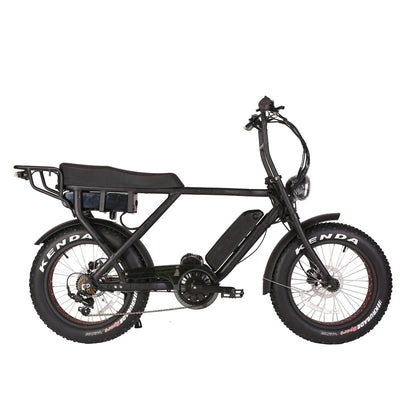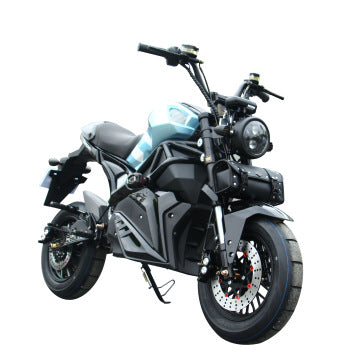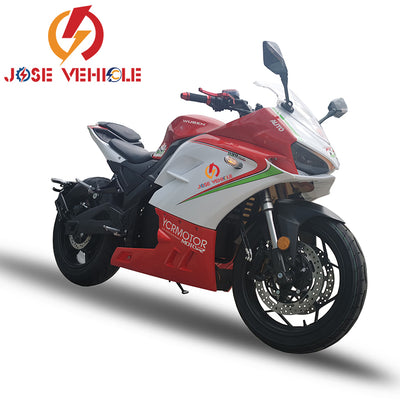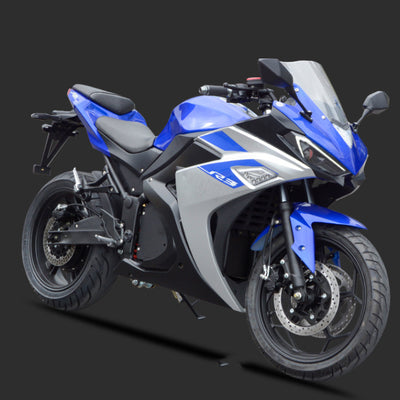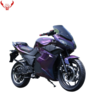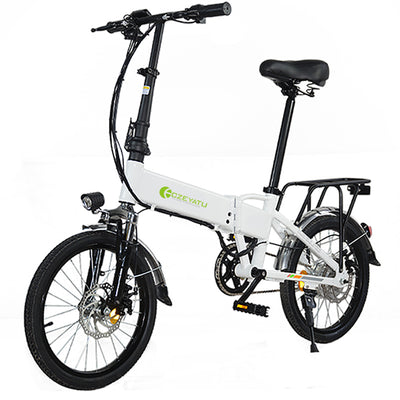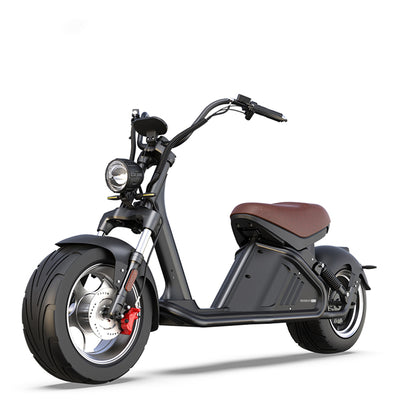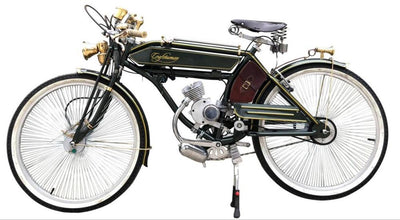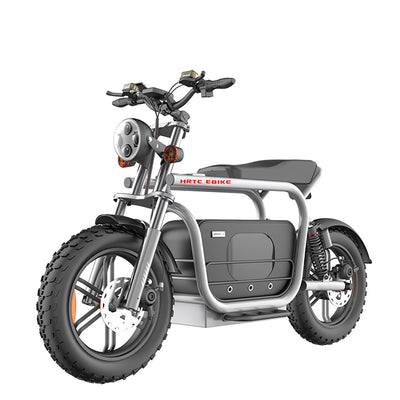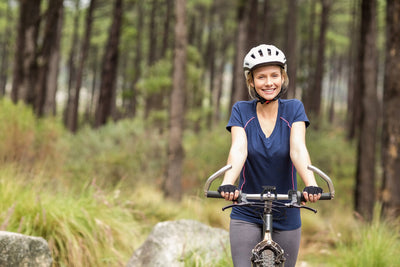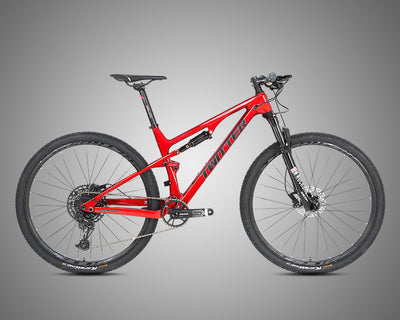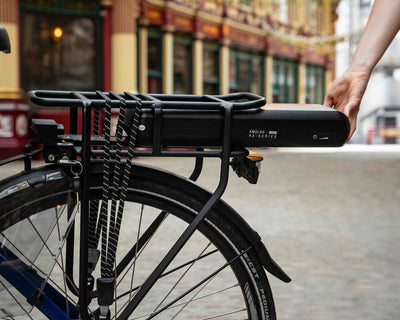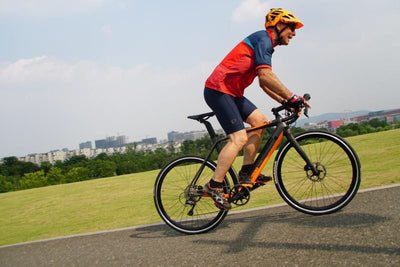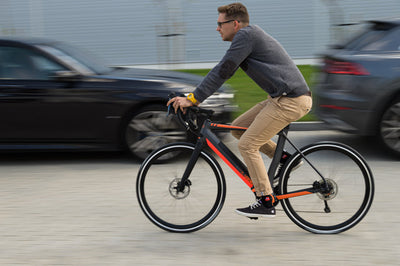What’s the difference between the Torque Sensor and Cadence Sensor on an e-bike?
Posted by Tom Lee on
Before you buy an e-bike, you should know the difference between Cadence and Torque.
E-bikes are typically equipped with one of two sensors: Cadence or Torque. pedal and torque sensors communicate with the e-bike's Pedal Assist System (PAS) as they activate the motor and propel the bike forward. While both the Torque Sensor and torque sensors have the ability to activate the e-bike and propel the rider forward, they are not the same.
UNDERSTANDING CADENCE SENSORS

DYU BIKES EUIPPED CADENCE SENSORS FOR D3F
Most Cadence Sensor-based pedal assist systems start the motor of the e-bike when the rider starts to pedal. In simple terms, when the sensor detects any kind of movement in the pedals (when PAS is on), it sends a signal to the motor to start working. The motor then dictates a certain amount of power to move the rider forward.
How hard the rider steps on the pedal and the chosen level of pedal assist will affect the amount of power contributed by the motor. On Cadence Sensor-based pedal assist systems, the manufacturer may have preset speeds for the amount of power the motor can deliver at a given cadence. As the rider's pedal cadence increases, the motor will continue to output until the pre-defined threshold is reached and remains necessary over different terrains, gears and the rider's sustained pedal cadence. In short.
- As the rider's pedalling speed (i.e. their pedalling frequency) increases, Pedal Assist will reduce the output of the motor (i.e. the power contribution).
- As the rider's pedalling speed decreases, PAS will increase the output of the motor to propel the rider forward.
CADENCE SENSOR BENEFITS
EASY TO USE
One of the biggest advantages of using the Cadence Sensor e-bike is its ease of use. Cadence Sensor-based e-bikes require relatively light pressure on the pedals to activate the motor. As a result, the rider can put in minimal effort or absolute maximum effort and the motor will still engage, albeit at a different level. This makes cadence-based e-bikes an excellent choice for casual riders or riders with physical limitations looking for an easy ride. Some people even prefer a Cadence Sensor-only system, such as some people with sensitive joints. The Torque Sensor is usually (not always!) set to require more power to really get going, whereas e-bikes based on pedal lap speed don't care about your stamina, just that you have fully pedalled.
THE POWER OF UNANIMITY
The cadence-based system works like an 'on' and 'off' switch. In other words, riders receive help at a preset rate when they pedal, and they stop receiving help when they stop pedalling. With this in mind, e-bikes with the Cadence Sensor are often guaranteed to provide the rider with constant power and constant help when they need it. They do not need to put in extra effort to gain extra power. Whether the rider is going up a hill and wants to do the bare minimum, or cruising around and wants a bit of power to go faster, Cadence Sensor technology will always specify a fixed and consistent amount of power.
FELICIBILITY FOR CURISING & FAST RIDING
To reiterate the above points, Cadence Sensor requires minimal effort from the rider to provide them with maximum help with their e-bike motor. These types of e-bikes are usually fully powered and ready to go! This gives riders the flexibility to choose. They can choose whether they want to cruise around and ride leisurely, thus pedalling at a lower assistance level for less assistance. Or they can turn the PAS level up to really feel the wind in their face. Ultimately, how much assistance the rider needs is up to the rider, but the cadence-based e-bike will always provide the prescribed level of assistance.
DISADVANTAGES OF CADENCE SENSOR
FEELS LESS INTUITIVE
For riders who want to be more in sync with their e-bike and really feel their contribution, the Cadence Sensor can make PAS feel raw and counter-intuitive. Now, this is not to say that a rider on an e-bike with a Cadence Sensor will still not feel a strenuous workout. Rather, if the goal is to find an e-bike that PAS naturally works with you, rather than does most of the work for you, then an e-bike based on cadence technology may not be the most suitable.
POTENTIONAL FOR A SMALLER RANGE
Range is an important factor when considering which e-bike is best for you and there are a variety of variables that will ultimately affect the estimated range of an e-bike versus the actual range. The widespread use of sensor-based PAS, especially at higher levels of extended use, will use a lot of the e-bike's battery to start the motor. Therefore, affecting how far you can go on a single charge. In a sensor-only system, I had to brake more frequently to regulate speed.
MINIMAL EFFORT REQUIRED
This is ultimately subjective, but depending on the rider's activity level, preferences and riding needs, a cadence-based e-bike can feel as if they are not putting in enough work. Since the sensors will communicate to engage the motor any time they sense movement on the pedals, riders may feel like they are receiving too much PAS because they are putting in so little. Or, it's just too much help for them, period. Meanwhile, for others, it's exactly what they're looking for: an absolute riding experience without too much effort!
UNDERSTANDING CADENCE SENSORS

DYU BIKES EUIPPED TORQUE SENSORS FOR R1
While e-bikes with torque measurement can detect if you are pedalling, torque sensors use precision strain gauges to measure how hard the rider is pedalling. The torque sensor measures the force applied to the pedals by the rider and then determines how much power the motor should output to the e-bike. The torque sensor makes these adjustments in real time, increasing or decreasing the output of the motor depending on the pedal force applied by the rider. In other words, the torque sensor is working on and amplifying each of your inputs. This means that a well-implemented torque sensor will feel closer to riding an 'acoustic' bike - less like being pushed by a motor and more like having superhuman legs. In a nutshell.
- The harder you pedal, the more output the motor delivers up to the preset limit for a given PAS level.
- The less you press the pedal, the more the motor will meet you where you are and output less power.
TORQUE SENSOR BENEFITS
MORE NATURAL AND INTUITIVE WAY TO RIDE
The ride may feel more intuitive because the torque sensor adjusts the motor's assist level to match the rider's pedaling effort. The rider does not suddenly gain power when changing PAS levels because the torque sensor notifies when power is provided and does so gradually and dynamically. In many cases, the torque sensor PAS can feel similar to riding a regular bike because the rider can connect directly to the motor. On the other hand, if that's what you really like about going on a bike using an electric bike, chances are you'll like the more natural input from the torque sensor. You don't have to be a stubborn cyclist either. I'm a recreational rider, but these days I still have a hard time going back to just riding an e-bike.
HIGHER RANGE
Since the Torque Based PAS system does not produce a predetermined amount of output at any given PAS level, riders can save battery power and ride farther. Since it's the motor that just helps the ride, depending on how much effort they put in, torque-based e-bikes don't over-consume energy. Instead, they will only provide what is needed to make the rider feel like they are powering their e-bike, rather than their e-bike doing the heavy errands for them entirely. Ultimately, giving them better control of their ride, their e-bike and their experience.
DISADVANTAGES OF TORQUE SENSOR
MORE DIFFICULT TO REACH TOP SPEED
The rider removes what they put in through the torque sensor. Therefore, in order to reach higher PAS speeds, they need to put more work into pedaling a torque-based system than a Cadence Sensor-based system, which immediately outputs the rider at a higher set speed. In addition, once an e-bike with a torque sensor reaches top speed, maintaining top speed also requires more sustained pedal power.
RIDE HARDER
To reiterate and expand on the points discussed above, a torque-based PAS system will require more effort from the rider to initiate and perform at maximum potential. Ultimately, this factor is also subjective to who the rider is, what their activity level is, and what their riding needs and preferences are. If a Cadence Sensor-based PAS system feels too easy, then a torque-based PAS system is the next option. The sensor detects how much effort you're putting into your ride to amplify your effort, rather than mask it, giving you a more natural and intuitive connection to your e-bike!
OUTLINE
Ultimately, understanding torque and Cadence Sensor is not a question of "which is better? question. But "Which one is better for me?" Cadence Sensor PAS technology has become an industry staple for riders who are looking for an easy-to-use, powerful e-bike that gives them the freedom to put in as much or as little effort as possible without losing power. On the other hand, Torque Sensor PAS technology takes the rider's input and multiplies it to provide a more natural and intuitive riding experience.
Both types of e-bikes will ultimately provide riders with what they are looking for: battery powered assistance while riding. The question to ask yourself is, how much or how little work do you want to put into getting that assistance? If you want the option to increase pedaling power when you need it, but have the flexibility to rely solely on high and powerful speeds, try riding an e-bike with the Cadence Sensor Test. Or, if you want your e-bike to simply amplify your efforts, consider test riding an e-bike equipped with a torque sensor!
But, if all else is equal, is a torque sensor worth it? Only you can decide.
For example, if you only need a bike for errands, commuting and freight, the difference between the two may not be significant.
- Tags: aliexpress electric bike

